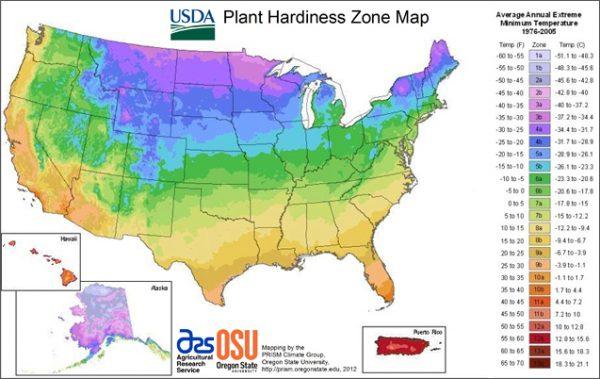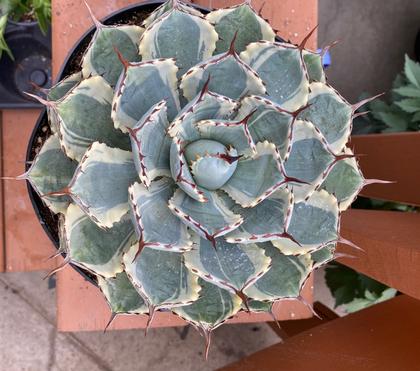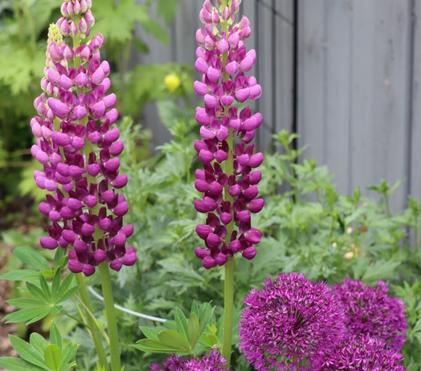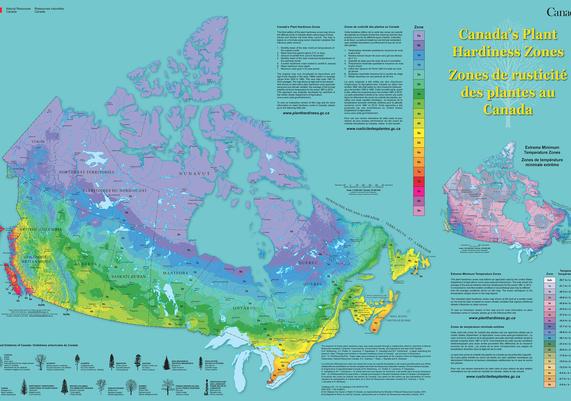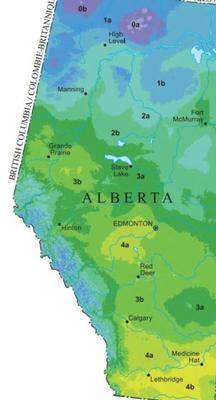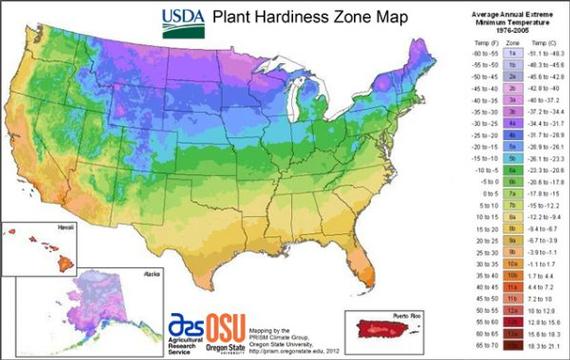What Growing Zone is Edmonton?
Explore the history of horticultural zones, what horticultural zone Alberta is, what growing zone Edmonton is, how horticultural zones benefit the home gardener, and some hardy perennials for Edmonton’s horticultural zone with us in this blog.
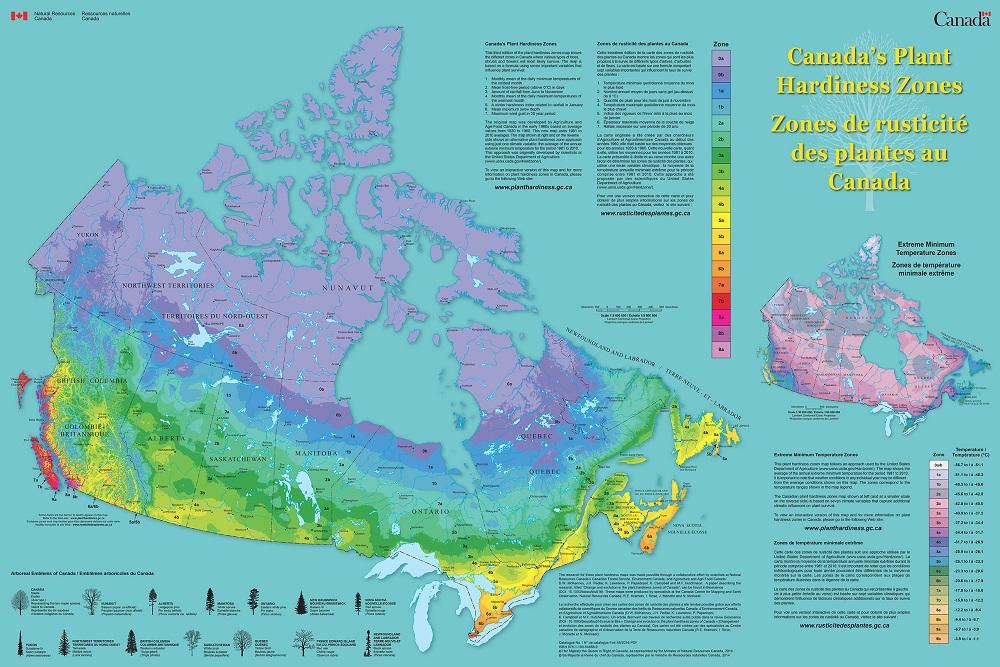
Canada's Plant Hardiness Zones
What are Horticultural Zones?
Horticultural zones are one of the backbones of reference for both agriculture and horticulture, but for the beginning gardener they can be confusing.
Let’s take the mystery out of those horticultural zones….
The History of Horticultural Zones
Horticultural Zone rating maps have been around since the 1960s. They serve as a guideline in a large scale way for horticulture and agriculture, but they also serve home gardeners. Governments and other agencies use them to help guide informed decision making and the same is true for home gardeners.
Fifty years ago, the United States Department of Agriculture developed the first maps with a methodical rating system for plant hardiness zones. At that time, this rating system was only based on minimum temperatures. They plotted out areas across the United states that experienced similar weather conditions and grouped them together into 11 different zones. Each zone is 10ºF warmer than the other.
Factors Affecting Horticultural Zones
Latitude is a major factor affecting climate, so you’d expect to see lines drawn evenly across the continent from east to west, but that isn’t the case. Other factors that influence climate include mountains, valleys, rivers, and large bodies of water.
In regards to the minimum temperature they have the following effect:
-
Mountains – have a cooling influence
- Valleys – have a warming effect
- Rivers – have a warming impact
- Large bodies of water – have a warming influence
In the photo above, you can see how the horticultural zones of the United States wrap around the Rocky Mountains because the mountains cool the areas surrounding them. Both the east and west coastal areas make the zones higher than the central areas of the United States.
We see the same features affecting Canadian climates.
Canada came out with its own horticultural zone maps in 1967. Canadian researchers expanded the information base to include:
- Minimum and maximum temperatures
- Number of frost-free days
- Summer rainfall
- Snow cover
- Maximum wind speed
- January rainfall
Canada’s Horticultural Zone Map
Canada’s map has 10 zones in all, ranging from 0 – 9. The smaller the number, the cooler the climate is in the designated region.
- 0 is the coldest zone, and 9 is the warmest. We see zone 0 up in the arctic regions and through the territories of the Yukon, Northwest Territories, and Nunavut. Zone 9 is in the Niagara Peninsula, which is a similar in latitude to the northern California.
- There is a 5.6ºC difference between zones.
- These zones are further divided in sub-zones, designated with an ‘a’ or a ‘b’:
- The ‘a’ label indicates temperatures that are slightly cooler than the ‘b’ label. Each a & b sub-zone has a variance of 2.8ºC.
- For example, according to the map called ‘Canada’s Plant Hardiness Zones’ produced by Natural Resources Canada, zone 3a is just a little chillier than zone 3b. Zone 3a has a range of lowest temperatures of -40C to -37.2C, and zone 3b has an average lowest temperature range of –37.2C to -34.4C.
What Growing Zone is Alberta?
So let’s bring this discussion closer to home. Many people ask what horticultural growing zone Alberta is. The short answer to this question is – many. Here’s why:
- Alberta is a big place – There are 750 miles (1,207 km) between Alberta’s northern border and southern border. And just in case you were wondering, it’s 400 miles (644 km) from the eastern border to the western border.
- That vast distance from north to south gives us a large reach of latitude and consequently, growing zones.
- According to the Agriculture and Agri-Food Canada zone map, Alberta’s growing zones range from 0 at the northern border to a zone 5 at the southern border.
- The other thing that affects Alberta’s growing zones is the mountains along the western border.
- On the Alberta zone map, the mountains have a rating of zone zero, but the zones quickly warm up to a zone 3 they approach Calgary. Calgary has challenges of its own with the freeze thaw cycles of the Chinooks influenced by the mountains and gardeners in the Calgary area need to be more conservative than those in Edmonton despite being 300 km further south.
What Growing Zone is Edmonton?
Edmonton’s horticultural zone classification seems to depend on who the source is:
- Edmonton’s zone rating is 3 according to Agriculture and Agri-Food Canada
- The Alberta Hardiness Zone Map gives Edmonton a 4a rating (-34.4 to -31.7C).
- The Edmonton Horticultural Society gives Edmonton a zone 3b rating (37.2 to -34.5C).
- Another source gives us a 4b rating with our extreme low temperatures of -31.7 to -28.9C.
But we know that bottoming out at -31.7C is a little optimistic for our winters.
There are microclimates in the Edmonton region too – like near the river. Examples of this are Cloverdale and Riverdale. The river has a warming effect during the winter which can boost the average and extreme cold temperatures in those specific areas a little.
Our Recommendation on Edmonton’s Growing Zone:
- We recommend staying conservative when planning your garden.
- We feel most comfortable using a zone 3 rating for Edmonton with some zone 4a plants thrown in.
- This means that we can grow zone 2 and 3 perennials with a high level of confidence and can try 4a perennials and see how they do.
- We find that as soon as we progress out of Edmonton’s city limits and get into rural Alberta, the plant rating rapidly dives to zone 2 with some zone 3 success, especially if the area is windy.
- Always be sure to check labels and ask staff about zone ratings on the perennials you buy. We have made it a practice at our greenhouse to only carry perennials bearing zone 4 ratings and below. Remember that zone ratings are a guideline for success, and not a guarantee.
- Related: There are other reasons perennials fail to return in the spring – check out our blog called 3 Main Reasons Why Perennials Die Over the Winter.
How do Horticultural Zones Benefit the Home Gardener?
Horticultural zones provide a frame of reference as to what types of trees, shrubs, and perennial plants are most likely to survive in a region. Many books and websites have published lists of which plants will grow best for each zone. However, as you do your research, you will find incongruences between sources in the lists published.
How to deal with zone inconsistencies?
- Check through a few different lists to determine a pattern of recommended trees, shrubs, and perennials for your area.
- You will notice that the trees, shrubs, and perennials all have a horticultural zone span. Some may have a wide and broad reach extending throughout all of Alberta, where others will have a narrower range, only being able to survive in 2 or 3 zones.
- For example:
- You may see that a plant is mentioned as a zone 3, 4, and 5 from once source, but on another it is catalogued as a 3, and 4; where on another it is recorded as a 2, 3, and 4.
- Our recommendation is to do an average – find the middle ground. Eliminate the extremes and pick the zones that are mentioned the most. In this case, take out the zone 2 and the zone 5. And likely the plant will do best in a zone 3 or 4.
Perennial Ideas for Edmonton’s Horticultural Zone
When you have done your research and know what horticultural zone your gardening space is, you should experience a higher rate of success with your perennial garden.
The following is a list of good and reliable perennials tried and tested in our gardens for our Edmonton growing zone:
Perennials for Sun:
- Alchemilla (Lady’s Mantle), Aruncus (Goatsbeard), Asiatic Lilies, Campanula, Clematis, Dictamnus (Gas Plant), Delphinium, Echinops (Globe Thistle) because of the bees, Filipendula (Queen of the Prairie), Hemerocallis (Daylilies), Grasses – specifically Calamagrostis, Heliopsis (False Sunflower), ), Limonium (Sea Lavandar) again because of the bees, Liatris (Gayfeather), Lupines, Martagon Lilies, Ornamental Rhubarb, Peonies, Pulsatilla (Anemone), Sedum, Trollius
Perennials for Shade:
- Aconitum (Monkshood), Actea (Cimicifuga), Alchemilla (Lady’s Mantle), Aquilegia (Columbine), Aruncus (Goatsbeard), Astilbe (False Spirea), Dicentra (Bleeding Heart), Hosta, Ligularia, Mukdenia, Primula (Primrose), Rogersia, Trollius
- Related Reading: Shade Solutions
More Info: See our list of our Fifteen Fab & Faithful Perennials with more details on some of the best perennials for the Edmonton area.
Always feel free to contact us with any questions. We would be happy to walk you through great choices for your perennial garden in the perennial area of our greenhouse in the spring.
